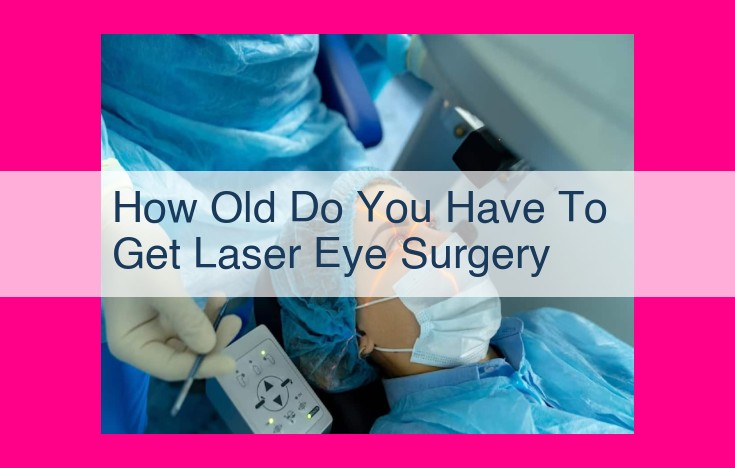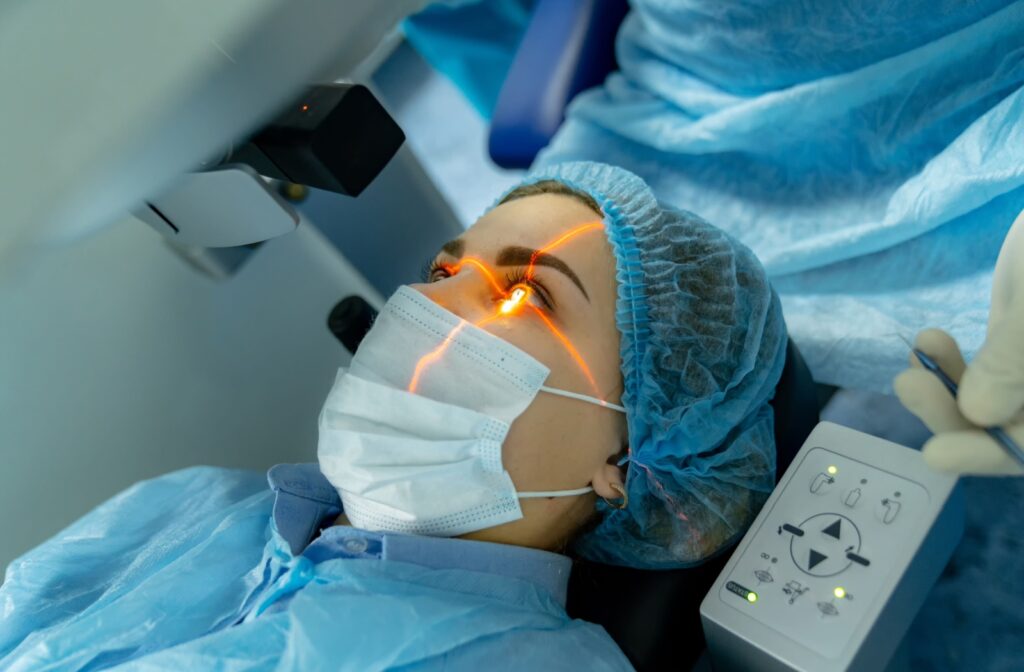How Many Times Can You Get Laser Eye Surgery
How Many Times Can You Get Laser Eye Surgery? The Ultimate Guide
If you've already enjoyed the freedom of life without glasses thanks to laser vision correction, you might wonder what happens if your vision starts slipping again years down the line. It's a very common and valid question. So, let's dive right into the core concern: How many times can you get laser eye surgery?
The short answer is: possibly more than once, but it is highly dependent on specific biological factors unique to your eyes. Unlike getting a haircut, laser eye surgery is a permanent modification to your cornea, and there are strict safety limits that determine if you are eligible for a repeat procedure, often referred to as an "enhancement."
Understanding the First Surgery: Why It Works (and Sometimes Doesn't)
When you undergo procedures like LASIK (Laser-Assisted in Situ Keratomileusis) or PRK (Photorefractive Keratectomy), the surgeon uses an excimer laser to reshape the clear, dome-shaped tissue at the front of your eye—the cornea. This reshaping corrects the refractive error, allowing light to focus properly on the retina.
For most patients, this is a one-time, permanent fix. However, for a small percentage of people, their vision might regress over time. This regression can happen due to natural aging processes, hormonal changes, or in some cases, the original correction was slightly under-power due to unique healing responses.
It's important to realize that the need for a second procedure doesn't necessarily mean the first surgery failed. It simply means that your body or eyes have changed since the initial procedure.
The Concept of an "Enhancement" vs. a Second Surgery
In clinical terms, a follow-up procedure soon after the original surgery (typically within the first year) is often called an "enhancement" or "touch-up." This is usually done to fine-tune the result if residual refractive error remains.
A true "second surgery," however, happens years later when the patient experiences significant vision regression. Whether it's an enhancement or a full second procedure, the criteria for safety remain the same: they are entirely dependent on how much corneal tissue you have left to work with.
The Critical Factor: Corneal Thickness
This is the biggest hurdle when considering multiple procedures. Every time the laser reshapes your cornea, it removes tissue. The cornea needs a certain amount of structural integrity to remain stable, otherwise, you risk serious complications like corneal ectasia (a condition where the cornea bulges outward, severely distorting vision).
Think of your cornea like a road. The surgeon can pave over bumps, but only if the foundation is thick enough underneath. Once too much material is removed, the structural strength is compromised.
Measuring Your Mileage: How Much Cornea is Left?
Before any laser surgery, your ophthalmologist meticulously measures your corneal thickness using a pachymeter. This measurement, usually around 500 to 600 micrometers (µm) initially, is crucial.
During the first surgery, tissue is ablated based on your prescription. Higher prescriptions require more tissue removal. For a second procedure, the doctor must calculate the amount of residual stromal bed (the remaining structural layer) after the second correction is made.
This is why keeping your records from the first surgery is so important—it gives the second surgeon a baseline measurement to work from.
Safety Thresholds and Why They Matter
Most reputable surgeons adhere to a very strict minimum residual corneal thickness. While standards vary slightly, the generally accepted safety minimum for the stromal bed after the final procedure is 250 µm to 300 µm.
If the proposed enhancement or second surgery would leave your cornea thinner than this threshold, the answer to How Many Times Can You Get Laser Eye Surgery for you becomes "one, and only one." Your doctor will prioritize your long-term eye health over achieving perfect 20/20 vision.
Factors that generally decrease your chances of qualifying for a second procedure include:
- High initial prescription (meaning more tissue was removed the first time).
- Naturally thin corneas to begin with.
- A history of dry eye disease that has worsened.
Risks Associated with Multiple Procedures
While enhancements are common and generally safe when performed within strict safety guidelines, repeating the procedure does incrementally increase specific risks.
The primary concern, as mentioned, is the structural stability of the cornea. Beyond that, patients undergoing repeat procedures may face:
- **Increased Dry Eye Syndrome:** Removing corneal tissue affects the tiny nerves that stimulate tear production. Repeating the process can exacerbate chronic dryness.
- **Haze or Scarring:** PRK enhancements carry a higher risk of corneal haze compared to the initial surgery, which might require additional medications (like Mitomycin-C) during the procedure.
- **Visual Aberrations:** Multiple changes to the cornea's shape can sometimes introduce higher-order aberrations, potentially leading to issues like glare or halos, especially at night.
Your surgeon will thoroughly evaluate the risk-benefit ratio before deciding to move forward.
When Is a Second Surgery NOT Recommended?
There are several scenarios where a second laser surgery is contraindicated, regardless of how much your vision has regressed. These are critical health considerations:
First, if your vision is changing rapidly, the surgeon needs stability. You must have a stable prescription for at least 12 months before considering any touch-up procedure. Changing prescriptions may signal underlying issues unrelated to the previous surgery.
Second, if the regression is due to presbyopia (age-related inability to focus up close), laser eye surgery won't solve that problem. Presbyopia is a change in the lens, not the cornea.
Finally, any sign of underlying corneal disease or a severely compromised tear film will immediately disqualify you.
Alternative Solutions If You Don't Qualify for a Repeat
If you're disappointed to learn that your corneal thickness prevents a second laser surgery, don't worry—you still have excellent options available to restore crisp vision.
These alternatives focus on correcting vision without ablating corneal tissue:
1. Implantable Collamer Lenses (ICL): ICLs are tiny, flexible lenses surgically placed inside the eye, typically behind the iris but in front of the natural lens. They work like internal contact lenses and are ideal for patients who have thin corneas or very high prescriptions.
2. Refractive Lens Exchange (RLE): RLE involves removing the eye's natural lens and replacing it with an artificial intraocular lens (IOL). This is often recommended for older patients (usually 50+) who are also experiencing early signs of presbyopia or cataracts. RLE offers a permanent correction without touching the cornea.
3. Advanced Contact Lenses: Sometimes, the safest and simplest solution is to return to wearing specialty contact lenses, such as custom soft lenses or rigid gas permeable (RGP) lenses, to correct the mild regression.
Conclusion
So, How Many Times Can You Get Laser Eye Surgery? The general rule is often "once, maybe twice." Most patients who require an enhancement only need one touch-up procedure throughout their lifetime, if they need one at all. However, receiving a third or subsequent laser procedure is exceptionally rare and usually impossible due to safety standards regarding residual corneal thickness.
The total number of procedures you can safely receive is dictated not by the calendar, but by the biology of your cornea. Always consult with a board-certified ophthalmologist who can use advanced imaging to accurately measure your current corneal thickness and determine if a second procedure is a viable and safe option for you.
Frequently Asked Questions (FAQ) About Repeat Laser Eye Surgery
- Can I get LASIK if I previously had PRK?
- Yes, it is sometimes possible. If you initially had PRK and need an enhancement, you may be eligible for an enhancement using the PRK method again, or in some cases, a surgeon might consider LASIK if the cornea is thick enough. However, the initial method (PRK vs. LASIK) matters less than the amount of tissue already removed.
- How long do I have to wait between laser eye surgeries?
- If an enhancement is needed soon after the initial surgery, most surgeons recommend waiting at least 3 to 6 months to ensure the eye has fully healed and the prescription is stable. If you are seeking a procedure years later due to regression, the main requirement is that your prescription has remained stable for at least 12 months.
- Is a second laser eye surgery more expensive?
- If the procedure is considered an "enhancement" within a short period (e.g., the first year), it is often covered under the original surgery package at little to no extra cost. However, a procedure performed many years later due to regression is typically treated as a new surgery, and standard fees will apply.
- If I can't get a second surgery, will I have to wear glasses forever?
- Absolutely not! If a laser enhancement is deemed unsafe, advanced alternatives like ICLs (Implantable Collamer Lenses) or RLE (Refractive Lens Exchange) offer permanent, excellent vision correction, regardless of your corneal thickness.
How Many Times Can You Get Laser Eye Surgery
How Many Times Can You Get Laser Eye Surgery Wallpapers
Collection of how many times can you get laser eye surgery wallpapers for your desktop and mobile devices.

Mesmerizing How Many Times Can You Get Laser Eye Surgery Background for Your Screen
Experience the crisp clarity of this stunning how many times can you get laser eye surgery image, available in high resolution for all your screens.
:max_bytes(150000):strip_icc()/laser_eye_surgery-a7551adb99784add9e388179cc68b3c7.jpg)
Stunning How Many Times Can You Get Laser Eye Surgery Design Concept
A captivating how many times can you get laser eye surgery scene that brings tranquility and beauty to any device.

Exquisite How Many Times Can You Get Laser Eye Surgery Wallpaper Illustration
Find inspiration with this unique how many times can you get laser eye surgery illustration, crafted to provide a fresh look for your background.

Beautiful How Many Times Can You Get Laser Eye Surgery Abstract for Your Screen
Discover an amazing how many times can you get laser eye surgery background image, ideal for personalizing your devices with vibrant colors and intricate designs.

Stunning How Many Times Can You Get Laser Eye Surgery Wallpaper Art
Immerse yourself in the stunning details of this beautiful how many times can you get laser eye surgery wallpaper, designed for a captivating visual experience.

High-Quality How Many Times Can You Get Laser Eye Surgery Artwork Illustration
Discover an amazing how many times can you get laser eye surgery background image, ideal for personalizing your devices with vibrant colors and intricate designs.

Amazing How Many Times Can You Get Laser Eye Surgery Picture Nature
Experience the crisp clarity of this stunning how many times can you get laser eye surgery image, available in high resolution for all your screens.

Artistic How Many Times Can You Get Laser Eye Surgery Design for Your Screen
Immerse yourself in the stunning details of this beautiful how many times can you get laser eye surgery wallpaper, designed for a captivating visual experience.

Amazing How Many Times Can You Get Laser Eye Surgery Design in 4K
Transform your screen with this vivid how many times can you get laser eye surgery artwork, a true masterpiece of digital design.

High-Quality How Many Times Can You Get Laser Eye Surgery Picture Art
Explore this high-quality how many times can you get laser eye surgery image, perfect for enhancing your desktop or mobile wallpaper.
Vivid How Many Times Can You Get Laser Eye Surgery Wallpaper for Mobile
Experience the crisp clarity of this stunning how many times can you get laser eye surgery image, available in high resolution for all your screens.

Amazing How Many Times Can You Get Laser Eye Surgery Moment Collection
Transform your screen with this vivid how many times can you get laser eye surgery artwork, a true masterpiece of digital design.

Amazing How Many Times Can You Get Laser Eye Surgery Artwork Art
Discover an amazing how many times can you get laser eye surgery background image, ideal for personalizing your devices with vibrant colors and intricate designs.

Artistic How Many Times Can You Get Laser Eye Surgery Landscape in 4K
Find inspiration with this unique how many times can you get laser eye surgery illustration, crafted to provide a fresh look for your background.

Artistic How Many Times Can You Get Laser Eye Surgery Image Illustration
A captivating how many times can you get laser eye surgery scene that brings tranquility and beauty to any device.

Spectacular How Many Times Can You Get Laser Eye Surgery Image for Your Screen
A captivating how many times can you get laser eye surgery scene that brings tranquility and beauty to any device.

Vivid How Many Times Can You Get Laser Eye Surgery Design in 4K
Transform your screen with this vivid how many times can you get laser eye surgery artwork, a true masterpiece of digital design.

Lush How Many Times Can You Get Laser Eye Surgery Moment Digital Art
Immerse yourself in the stunning details of this beautiful how many times can you get laser eye surgery wallpaper, designed for a captivating visual experience.

Artistic How Many Times Can You Get Laser Eye Surgery View Collection
Find inspiration with this unique how many times can you get laser eye surgery illustration, crafted to provide a fresh look for your background.

Captivating How Many Times Can You Get Laser Eye Surgery Picture for Mobile
This gorgeous how many times can you get laser eye surgery photo offers a breathtaking view, making it a perfect choice for your next wallpaper.
Download these how many times can you get laser eye surgery wallpapers for free and use them on your desktop or mobile devices.
0 Response to "How Many Times Can You Get Laser Eye Surgery"
Post a Comment